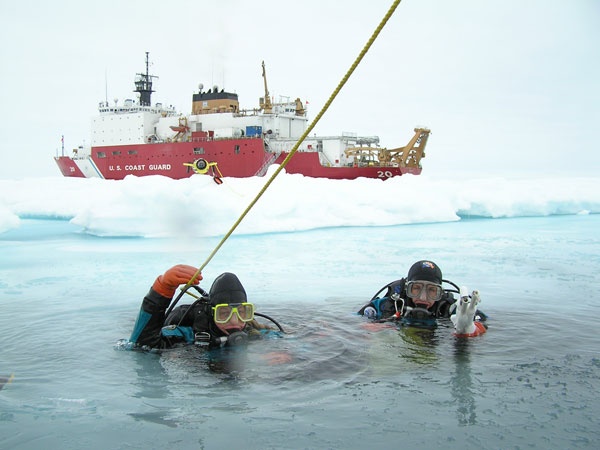The website of the Latvian Navy Coast Guard Service contains a manual for seafarers "Human survival in cold water". It should be noted that this guide should be read by anyone, including divers, because the information it contains can be really useful. The purpose of this guide is to explain the dangers of prolonged exposure to cold water that can endanger human life, as well as how to prevent or reduce these hazards. It is important to know that even if a person gets into cold water, he is not helpless, but able to ensure his survival. How to do it - all this is described in the guide "Human survival in cold water".
When a person gets into cold water, for example as a result of a shipwreck or catastrophe, the main threat to his health and life is hypothermia, or loss of body heat. And here it should be noted that hypothermia will occur not only when entering the cold water, but also when the water in the tropical zone for a long time will cool the human body.
In the early stages of cold exposure, the human body tries to fight excessive heat loss by narrowing the upper blood vessels and causing shivering, but if the cold exposure is too strong, the body is unable to retain and generate enough heat, resulting in lower body temperature. When it falls below +35 C, a person develops hypothermia. It manifests itself - fatigue, loss of coordination and orientation of movements, numbness occurs, speech disorders begin, psychological envelopment. If the internal body temperature continues to decrease, a person may lose consciousness, shivering is replaced by muscle stiffness, pupils may increase, heartbeat becomes irregular, slow and weak, and the pulse is barely noticeable. Death can occur at any stage of hypothermia.
The guide gives advice on how, if it is time, to dress properly before entering the water from the ship, how to do the right thing while in the water, to stay as long as possible while waiting for rescuers, and to help people rescued from the water. The guide also includes a cold water survival checklist and a rescue checklist.
According to the manual, the ship can sink in less than 15 minutes, which means that there is not much time to prepare a rescue plan. It should be remembered that, if possible, it is necessary to put on as much warm clothing as possible before entering the water. When a person enters the water, the main thing is to move as little as possible, because in this way the heat will leave the body the fastest. Equally important is the position of the body in the water - legs folded, elbows pressed to the side and arms crossed at the front - this position reduces the body's contact with cold water.
The provision of help in case of hypothermia, of course, depends on the general condition of the survivor and the resources available to the rescuers. The victim should be lifted out of the water as horizontally as possible and also brought to this position or placed in a supine position as soon as possible. The key is to try to help the victims warm up. How to do it all better - you can read it all in the guide "Human survival in cold water".
As the guide teaches, when you get into cold water, you should try to maintain a positive attitude, you should not lose hope of surviving and escaping.
Read the guideHuman Survival Cold Water Lat“


